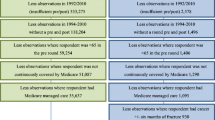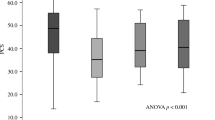Abstract:
There have been several studies of the impact of vertebral osteoporotic fracture on the quality of life and functionality of individual subjects. To date, however, no direct comparisons with age-matched normal subjects without vertebral fracture have been made. The radiographs of 145 female clinic patients with vertebral fractures were reviewed by the study physicians. The controls were recruited from the electoral role and by media appeal. One hundred and sixty-seven women had radiographs taken to determine those without vertebral fracture. Fracture subjects and controls had to be ambulant and were excluded if they had significant radiologic evidence of degenerative disk or joint disease of the spine. One hundred cases and one hundred controls were matched by 5-year age groups. The number, position and severity of the vertebral fracture on the lateral radiographs of the cases was recorded. Quality of life was measured using the Short Form-36 (SF-36) (maximum score 100) and a utility score calculated from thesese results (maximum score 1). Two measurements of functionality were employed: the Modified Barthel Index (MBI) to assess the activities of daily living (maximum score 100) and the Timed ‘Up & Go’ (TUG) that measured the time taken for the subject to rise from sitting in a chair, walk 3 m along a line, return to the chair and sit down. The fracture subjects had 2.9 + 1.6 (mean + SD) vertebral fractures and the time since last fracture was 5.1 + 4.8 years. The SF-36 physical function component summary index results were: fracture subjects 36 + 11, controls 48 + 9 (p < 0.001). The SF-36 mental health component summary index results were: fracture subjects 50 + 11, controls 54 + 8 (p <0.05). The utility scores were: fracture subjects 0.64 + 0.08, controls 0.72 + 0.07 (p <0.001). The MBI results were: fracture subjects 97 + 5, controls 99 + 1 (p< 0.01). The TUG results were: fracture subjects 13.8 + 7.3 s, controls 10.1 + 4.1 s (p <0.01). TUG and MBI scores correlated well with SF-36 scores; however, no domain of the SF-36 or functional measure correlated with either the number of vertebral fractures or the time since last vertebral fracture. Thus, clinically reported vertebral fractures impair both the quality of life and functionality of these subjects. The adverse impact of vertebral fracture on quality of life and functionality needs to be recognized by medical practitioners, subjects and the community, so that adequate health resources can be devoted to the prevention and treatment of this debilitating condition condition.
Similar content being viewed by others
Author information
Authors and Affiliations
Additional information
Received: 17 June 1998 / Accepted: 28 October 1998
Rights and permissions
About this article
Cite this article
Hall, S., Criddle, R., Comito, T. et al. A Case–Control Study of Quality of Life and Functional Impairment in Women with Long–Standing Vertebral Osteoporotic Fracture . Osteoporos Int 9, 508–515 (1999). https://doi.org/10.1007/s001980050178
Issue Date:
DOI: https://doi.org/10.1007/s001980050178




